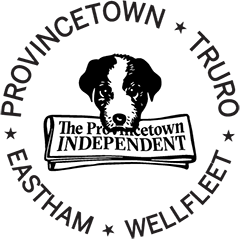If you gained weight last year, you’re not alone. Studies show that, in America, more than half of us put on unwanted pounds. Chalk it up to a combination of stress, decreased activity, and working 10 feet from the refrigerator.
With beach days and long-awaited social events on the horizon, lots of people tell me they’re thinking about how to get back in shape. One thing there’s no shortage of now is diet plans. I think we focus too much on them.
The good news is that you can lose weight on just about any diet. The bad news is that our metabolisms and ways of living make it easy to gain that weight back. The fact is, losing weight is not as hard as keeping it off for good.
What’s worse, dropping pounds by cutting calories drastically can result in loss of muscle mass. Once you lose muscle, when the weight comes back, the gain is adipose tissue — fat. Here’s how that works: with less muscle mass, your metabolism slows down because your body burns less energy to maintain fat than muscle every minute of the day. When you start burning less than you take in, the number on the scale creeps upward.
All of this means building muscle is especially important if you’re trying to lose weight. The best pandemic weight gain recovery plan is not a diet. What you need is strength training combined with aerobic exercise and a modest decrease in calories.
This doesn’t mean you need to be at the gym seven days a week power lifting. Research shows that 20 to 30 minutes of strength work two to three times a week can be very effective.
To build your own basic strength training plan, choose 8 to 10 exercises that target the large muscles of your arms, legs, and core. Think of your program as covering the basics of human movement:
-

Even violinists need muscle mass. Musician and teacher Susie Ikeda picks up a hand weight to add bicep curls to her weekend in Wellfleet. (Photo Teresa Parker) Choose basic squats, with or without additional weight, lunges, split squats, step ups, one-leg squats.
- There’s the classic dead lift and its variations, like the one leg version, the Romanian, or bridges.
- These include push-ups, bench presses, tricep dips, and shoulder presses.
- Pull-ups, pull-downs, rowing, and bicep curls are options.
- Core stability. There are planks, side planks, bird dogs, and the superman. And don’t forget dead bugs (it’s a terrible name, but a great exercise).
Your first step is to establish good form. Many of these strength exercises use body weight as resistance, but some require hand weights. If you’re using weights, they should be heavy enough to fatigue you after 10 repetitions. When 10 is too easy, it’s time to increase to 15. When that is too easy, add a little more resistance (step it up in small increments of about 25 percent, going, say, from lifting 8 pounds to lifting 10). Do 2 or 3 sets of 10 to 15 reps for each exercise.
If you need a refresher on these moves, there are many excellent online tutorials out there. Watch several so you can see what each one looks like for different types of bodies. But if you are a beginner or have a history of injuries, it’s important to get advice from an experienced trainer who can work with you either in person or online.
Once you’ve mastered the basics with good form, you can get more efficient by combining two exercises into one. Add a shoulder press to your squat or a bicep curl to your lunge and you can fit more strength training into a brief workout.
I want to mention two more things that will help with this reset. First, what you eat does matter. Building lean body mass requires protein, so make sure your diet includes enough of it, whether it’s meat, dairy, or plant based. Refuel after a weights session with a snack that includes 20 to 40 grams of protein. That’s when it will be most effectively taken up and used to build muscle tissue.
Last, a surprising way to boost muscle building is to get plenty of sleep. When you do strength training you are causing muscle breakdown on a micro level. When you rest, your body repairs the damage, and your muscles can grow stronger. This healing process is aided by human growth hormone, which is released mostly when you’re sleeping. A good night’s rest also does positive things for the hormones that affect your appetite.



